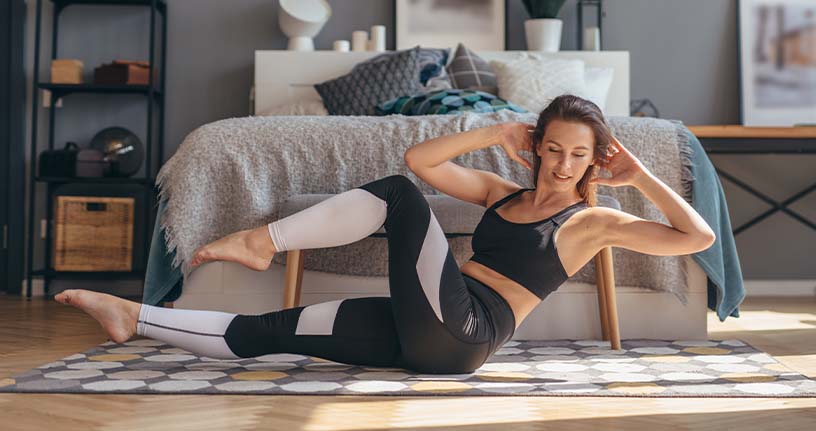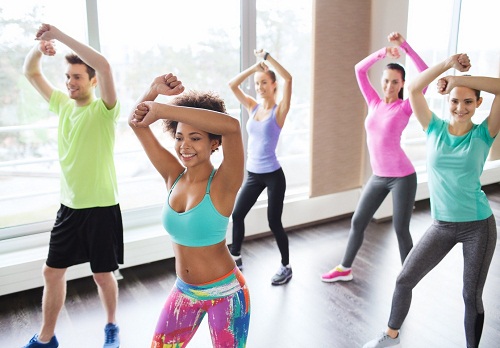New to strength training or unfamiliar with the core exercises, this guide provides a written description of each core exercise. Some useful core home workout tips and other related information will help you support your run training. You can choose specific strength and flexibility exercises for runners that help them run and prevent injuries. Many runners are aware of strength and conditioning but are not sure when to do these workouts or what to do until today.
When should I do strength workouts?
The core isn’t just your abs but includes the glutes, hamstring, lower back, hips, and oblique muscles. A core workout session should target these areas to maintain overall health and prevent injuries. The good part is that all exercises can be done at home with a dumbbell, mat, or band. There should be one or two strength workouts per week. Suppose you have another work schedule on your strength day; you should choose to run first. When switching things around, be conscious of exercises that follow your strength sessions. Your core muscle holds everything and supports the body during exercises. A strong core muscle helps to prevent instability when running. Your core keeps you stable, making your body hold its posture and maintain a good running form over long periods. This, in turn, provides more efficient energy use during running sessions. Even with a busy schedule and full training plans, it is important to prioritize core home workouts that will benefit you as a runner.
Try adding some of the core exercises to your next training session.
- Squat – This home workout for runners particularly involves hamstrings, glutes and quads. It generates power, strength, and stability. To perform this:
- Stand with your feet shoulder apart and point your arms straight.
- Start to move your hips, squat back and down until your thighs are parallel to the floor.
- Go back to a standing position by pushing through your hips.
- Squat jump – This boosts explosive power. To perform this:
- Stand straight with feet outside of shoulders.
- Sit down in a squat position while keeping your knees behind your toes.
- Now jump vertically by extending through your hips while swinging your arms for propulsion
- Land smoothly in a squat position with hips down. Repeat the same movement immediately after one.
- Single leg squat – This core exercise strengthens your muscles to promote power and stability. To perform this:
- Stand straight on one foot with the other leg bent at the knee.
- Make sure you are well balanced at one leg and squat down as low as possible without losing your balance.
- Pause at the bottom of a squat for a few seconds or as much as you can, then push back up through your heels while squeezing your hips as you go.
- Hold your arms straight in front of you during the exercise to help keep your balance.
- Lunges – This type of core exercise involves glutes and quads. It not only boosts strength but also increases the range of movement and stability. To perform this:
- Stand straight with your feet about shoulder-width apart
- Step forward into a lunge and lower until you reach 90 degrees at both knees.
- Return to starting position by pushing your body back up through your frontal foot heels.
- Switch legs and repeat the exercise
- Reverse lunge – This involves hamstrings, glutes, calves, and squads. To perform this:
- Stand straight, core tight
- Step backwards with one foot and lower until your knees reach approximately 90 degrees.
- Return to the starting position by pushing back up
- Repeat with other legs.
- Step up – It includes quads and hamstrings. To perform this:
- Stand straight facing the step or a box.
- Place one foot on the step and stand up onto the step by extending the hip and knee of the raised leg. Keep booth fete on the platform.
- Step back down with another leg, Switch legs and repeat with the other leg leading.
- Calf raises – This home workout for runners particularly involves calf muscles. It improves strength and stability and prevents injury. To perform this:
- Stand straight, core engaged
- Push your body through your feet while raising your feet until you are standing on your toes.
- Slowly return to your standing position.
Improving your core strength doesn’t take too much time a day each week. Spending just ten minutes after a run can greatly improve your performance. Focusing on these core workouts for runners will help you make the most of your time while quickly improving your core strength.



